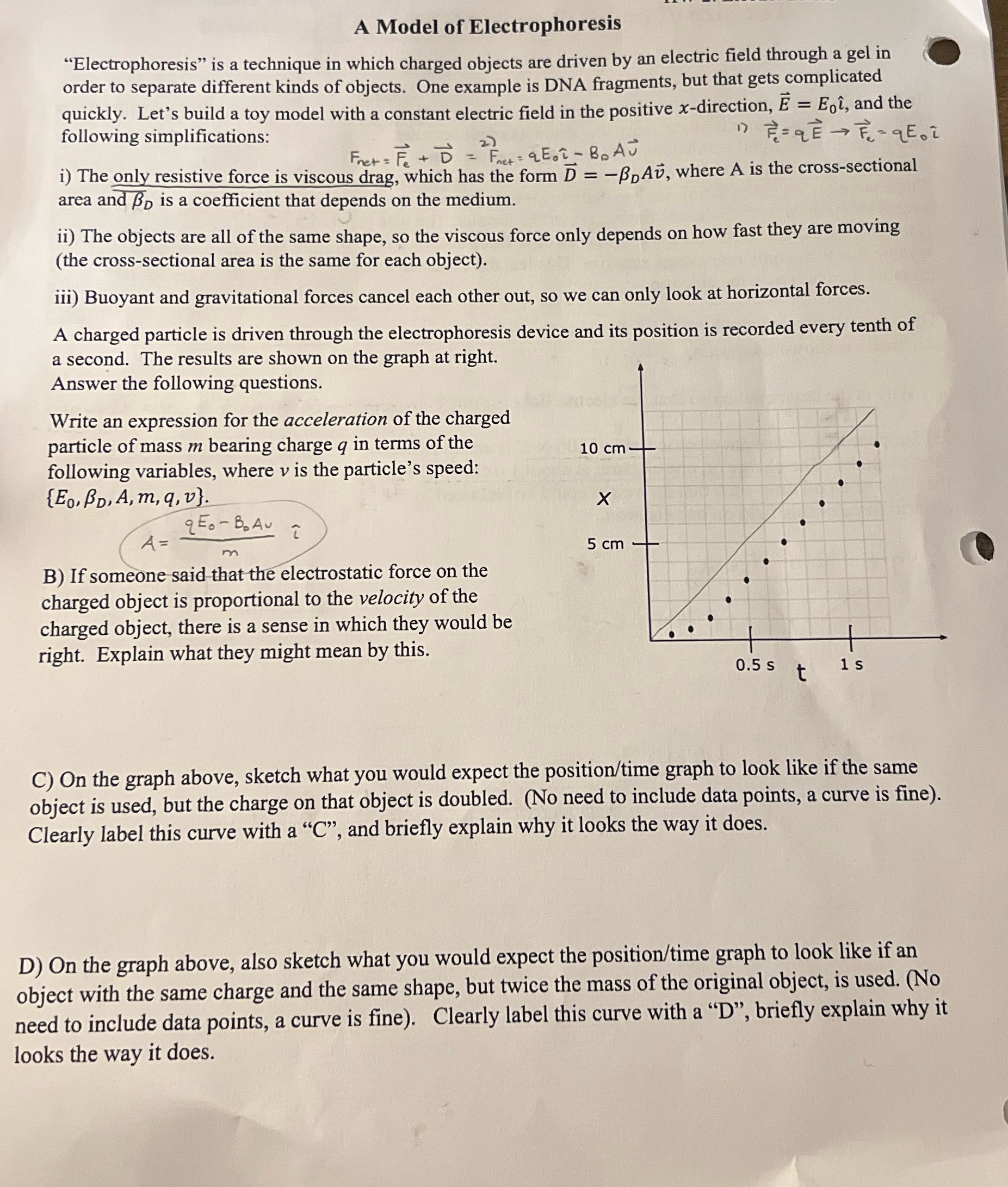Answered step by step
Verified Expert Solution
Question
1 Approved Answer
Please answer B, C, and D for me. Thank you A Model of Electrophoresis Electrophoresis is a technique in which charged objects are driven by
Please answer B, C, and D for me. Thank you

A Model of Electrophoresis "Electrophoresis" is a technique in which charged objects are driven by an electric field through a gel in order to separate different kinds of objects. One example is DNA fragments, but that gets complicated quickly. Let's build a toy model with a constant electric field in the positive x-direction, E = Eot, and the following simplifications: = q =qEoi i) The only resistive force is viscous drag, which has the form D = -Av, where A is the cross-sectional area and BD is a coefficient that depends on the medium. 2) Fret = F +== E.- BAJ D Fret E-BAJ ii) The objects are all of the same shape, so the viscous force only depends on how fast they are moving (the cross-sectional area is the same for each object). iii) Buoyant and gravitational forces cancel each other out, so we can only look at horizontal forces. A charged particle is driven through the electrophoresis device and its position is recorded every a second. The results are shown on the graph at right. Answer the following questions. Write an expression for the acceleration of the charged particle of mass m bearing charge q in terms of the following variables, where v is the particle's speed: {Eo, BD, A,m,q,v}. 10 cm X y tenth of qE.-B. Av A = m B) If someone said that the electrostatic force on the charged object is proportional to the velocity of the charged object, there is a sense in which they would be right. Explain what they might mean by this. 5 cm 0.5 s 1 s t C) On the graph above, sketch what you would expect the position/time graph to look like if the same object is used, but the charge on that object is doubled. (No need to include data points, a curve is fine). Clearly label this curve with a "C", and briefly explain why it looks the way it does. D) On the graph above, also sketch what you would expect the position/time graph to look like if an object with the same charge and the same shape, but twice the mass of the original object, is used. (No need to include data points, a curve is fine). Clearly label this curve with a "D", briefly explain why it looks the way it does.
Step by Step Solution
There are 3 Steps involved in it
Step: 1

Get Instant Access to Expert-Tailored Solutions
See step-by-step solutions with expert insights and AI powered tools for academic success
Step: 2

Step: 3

Ace Your Homework with AI
Get the answers you need in no time with our AI-driven, step-by-step assistance
Get Started


